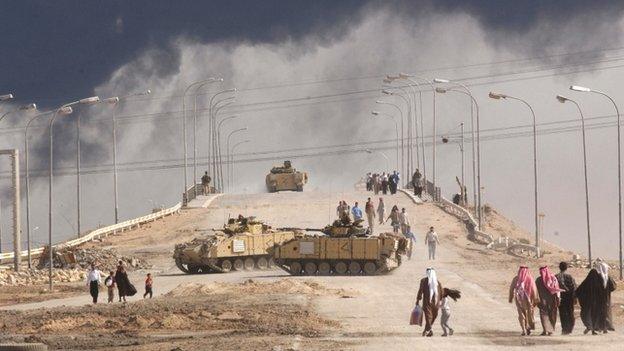Chilcot report: The flawed chain of intelligence that led to war
- Published
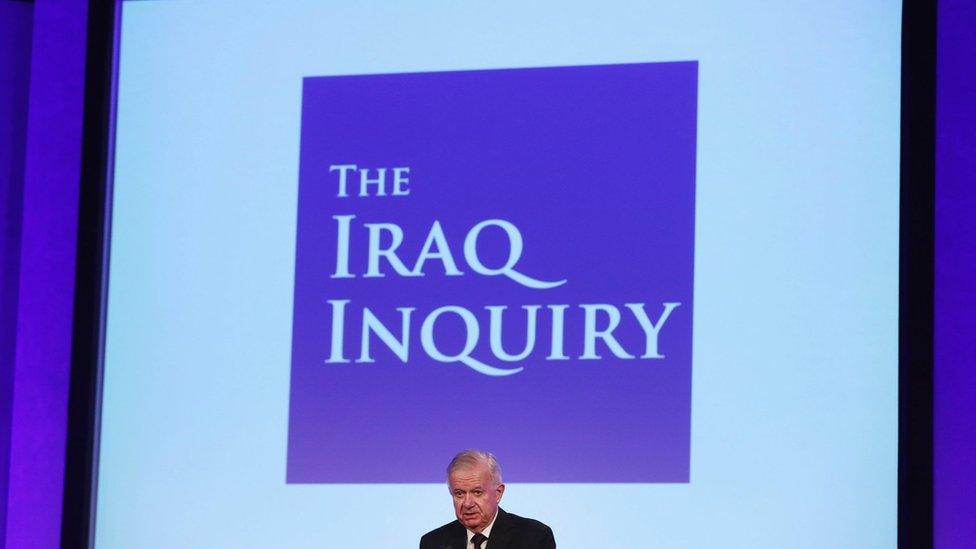
History will judge Tony Blair by the Chilcot report and not by the part he played in bringing peace to Northern Ireland.
It's a tragedy of Shakespearean dimensions - from peacemaker to George Bush's ally in the most disastrous war in Britain's recent history.
The report , externalis a coruscating indictment of the way in which intelligence was used by Tony Blair and his inner circle to justify the invasion, given the alleged threat from Iraq's weapons of mass destruction (WMD).
The government and MI6, despite serious doubts in some quarters of the Secret Intelligence Service, persisted with most of the sources on which the intelligence was based until the outbreak of war.
"Policy was made on the basis of flawed intelligence assessments," Chilcot concludes.
"They were not challenged and should have been."
The critical moment when those challenges were not made was when the government's dossier of September 2002 was being prepared six months before the invasion.
And the greatest deception turned out to be from a source whose claims about working as a chemical engineer at military facility outside Baghdad were taken seriously by both Britain and the US.
The dossier was based on intelligence provided to the prime minister by the Joint Intelligence Committee. It was taken from reports it had received over the preceding months from MI6 and other agencies.
The problem was the JIC assessments were qualified - the original reports said that intelligence was "sporadic and patchy" and "remains limited" and that "there was very little intelligence relating to Iraq's chemical warfare programme."
None of these qualifications however was included in the dossier. To have done so would have undermined its purpose to leave the public in no doubt.
Chilcot points out that the JIC assessments contained "careful language to ensure that no more weight is put on the evidence than it can bear."
He goes on to say that the dossier was "grounded in what Mr Blair believed rather than in the judgement which the JIC had actually reached… Iraq's capabilities were presented with a certainty that was not justified."
'Significant breakthrough'
As Chilcot acknowledges, the UK had no sources of human intelligence with reliable first-hand knowledge of Iraq's WMD capabilities.
While MI6 did have several sources, most proved to be embarrassingly unreliable.
But around the time of the government's September dossier, MI6 received word of a possible intelligence crown jewel, later referred to as "the new source on trial".

Find out more

The Chilcot Report: The Source Who Lied is on The Briefing Room, Radio 4 - catch up on BBC iPlayer Radio

On 11 September - almost two weeks before the dossier was published - Sir Richard Dearlove, the Chief of MI6, telephoned Sir John Scarlett, the head of the Joint Intelligence Committee, and said, "SIS is on the edge of a significant breakthrough."
According to Chilcot, Sir Richard told Scarlett it was "phenomenal access" that could be "the key to unlock Iraq's biological and chemical weapons programme".
The source was saying that Iraq had accelerated its chemical and biological production and had built further facilities throughout Iraq.
Sir Richard did qualify this by saying the case was "developmental" and remained "unproven".
The MI6 chief then drove to Downing Street to personally brief the prime minister.
Chilcot says this "personal intervention and its urgency gave added weight to a report that had not been properly evaluated and would have coloured the perception of ministers and senior officials".
No information from "the new source on trial" was included in the September dossier.
But the high expectations raised were dashed.
In February 2003, the month before the invasion, it was revealed that the source had been lying.
'Chemical attack'
This was only one of a series of sorry stories.
When the dossier was published one of the headlines was that Iraq could launch a chemical attack in 45 minutes using a missile that could reach as far as Cyprus.
This too was subsequently rubbished.
The case highlighted the way in which intelligence sometimes reached MI6 as the result of a chain of individuals going back to the original source.
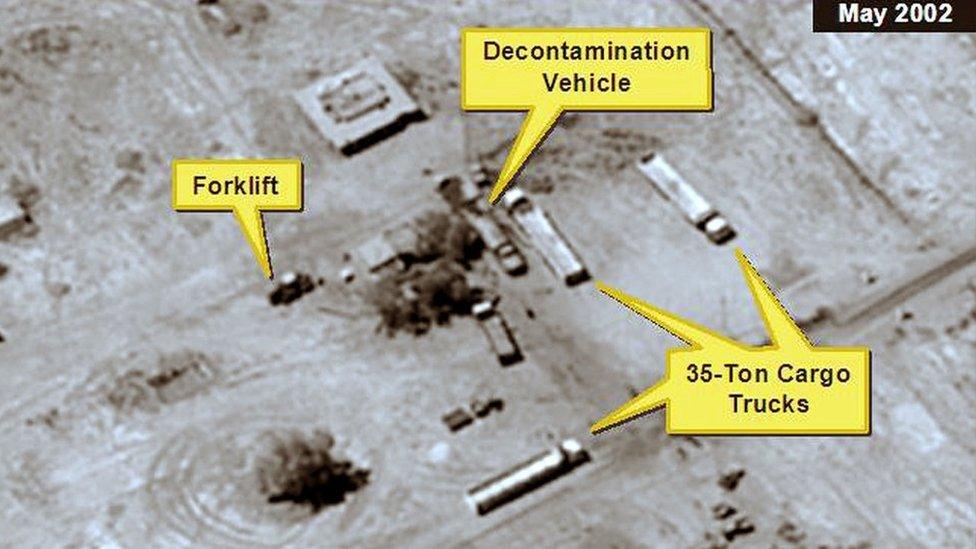
Curveball's claims were used by the the US in its presentation to the UN ahead of the Iraq War
Chilcot concluded there were concerns that "the source had coached the sub source, that the sub source had fabricated reports and that the source might not have accurately reported the information from the sub source".
In 2004, a senior SIS officer wrote to Foreign Secretary Jack Straw warning of a "snag" with the 45-minute intelligence.
The foreign secretary described it as "a very major understatement" that "seemed to drive a coach and horses through the veracity of the 45-minute claim".
But the most astonishing case of deception concerns a source codenamed "Curveball" - an American baseball term approximating to a "googly" in cricket.
His real name was Rafed al Janabi, an Iraqi asylum seeker who ended up in a German refugee camp near Nuremberg.
German intelligence became seriously interested in him because he said he was a chemical engineer who had worked in a military facility outside Baghdad.
The words "chemical" and "military" were magnets.
'Chemical explosion'
Curveball told his interrogators that he had seen mobile trucks and trailers with biological fermenters in the warehouses at the plant where he worked - and even sketched rough diagrams of them.
He also spoke of a chemical explosion in which 12 technicians had died. There was never any such explosion.
The Germans were not completely convinced of his reliability but there were some parts of his story that seemed to stand up in particular where his chemical knowledge was concerned.
Equally there were large parts that did not. Satellite imagery showed that it was impossible for such trucks to manoeuvre out of the warehouse - in addition to which there was a 6ft (1.8m) wall in the way.
The Germans sent around 100 reports on Curveball to their American counterparts and shared the intelligence with MI6. Both asked the Germans to give them access to Curveball but the Germans refused.
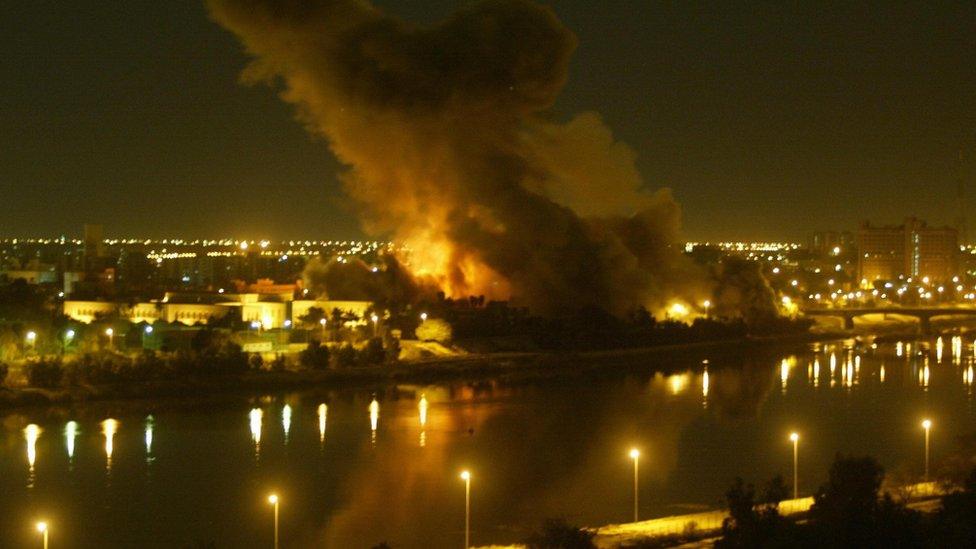
The US-led action in Iraq began in March 2003
Chilcot says that when Tony Blair was told about Curveball he said this was "an additional and new factor" and featured it in the September dossier.
The Americans too used Curveball to maximum effect, culminating in a presentation US Secretary of State Colin Powell made to the UN Security Council just before the invasion.
He even showed sophisticated full-colour graphics of the mobile biological trucks that Curveball had only roughly sketched.
Powell used what Curveball had told the Germans as fact, although the Germans had cautioned the Americans to use the intelligence with care.
Embarrassingly, none of what Curveball said turned out to be true. Powell was furious when he later learned that his key witness was a fake.
In 2004 MI6 and the CIA were finally given access to Curveball.
The Americans dismissed him as a fabricator and the British, noting "irreconcilable inconsistencies", formally dismissed him as an intelligence source who was "seriously flawed".
By then it was too late. Saddam had been toppled.
I remember interviewing Curveball in 2013. I'll never forget his answer to my final remark.
"We went to war on a lie and the person who told that lie was you," I said.
He replied "yes" with a chillingly sly smile.
The image would not be out of place of the front cover of the Chilcot report.
- Published6 July 2016
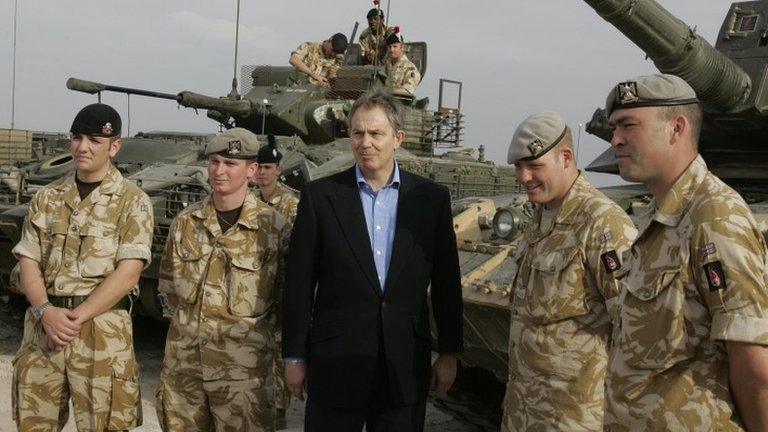
- Published7 July 2016
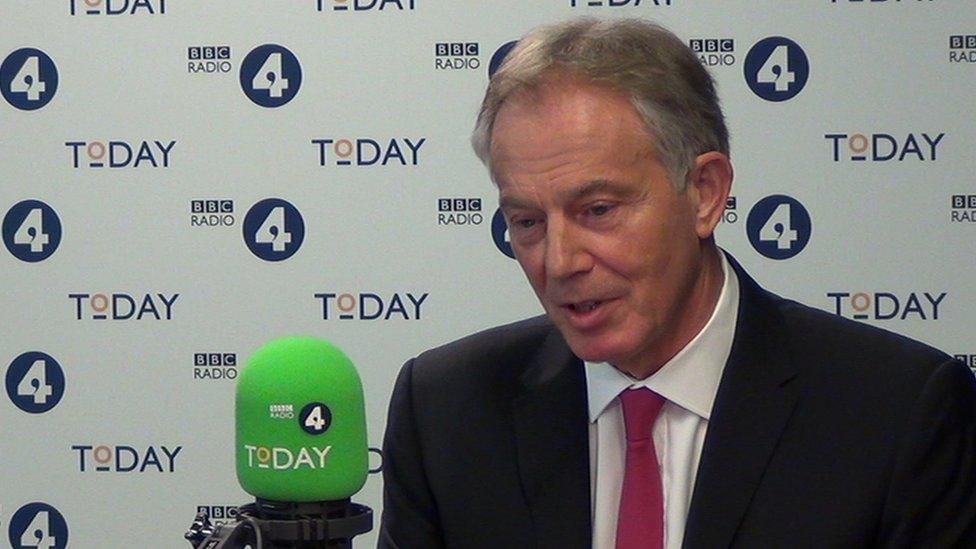
- Published6 July 2016

- Published18 March 2013
